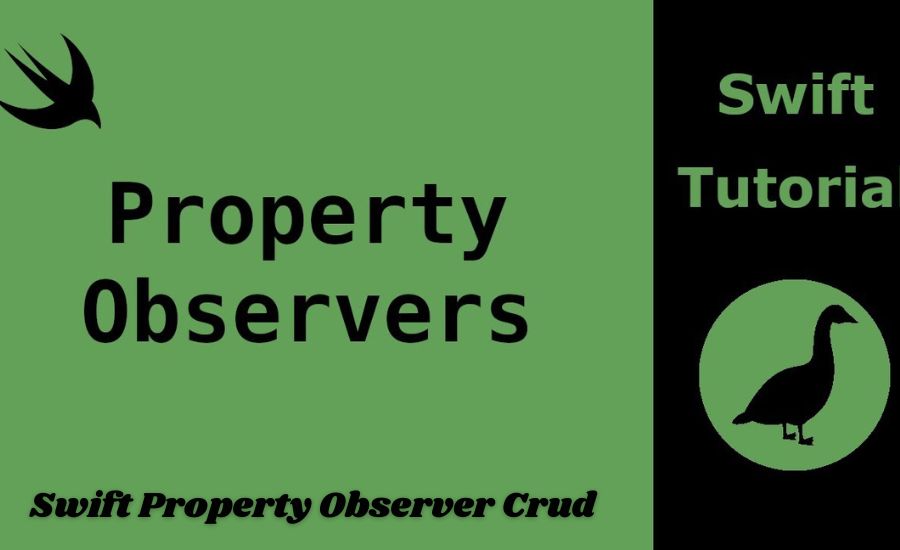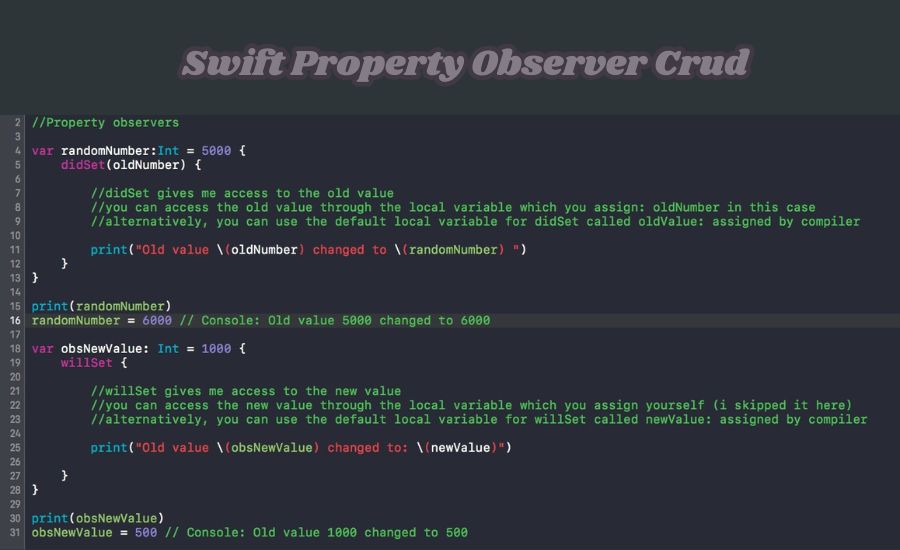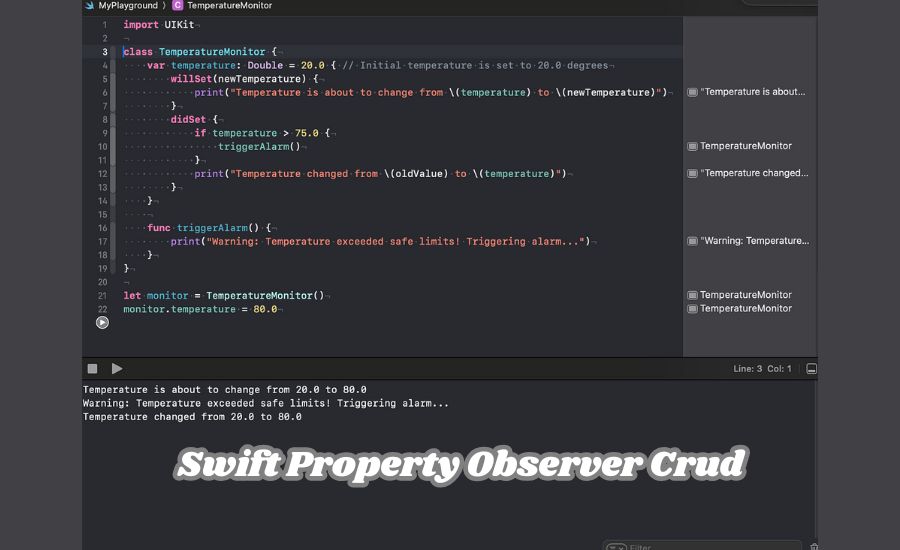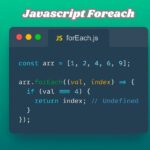Swift property observer crud are an amazing feature that makes it easy to track changes in variables and update your app’s data instantly. When working with CRUD (Create, Read, Update, Delete) operations, property observers can help keep everything in sync. In this post, we’ll dive into Swift Property Observer CRUD, showing you how it works.
At VistaGlimpse, we love sharing tips and tricks to help you write cleaner, more efficient code. Let’s explore how property observers can simplify CRUD operations in Swift!
Introduction to Swift Property Observer CRUD
Swift property observers are tools that help you monitor changes in a property’s value. In a CRUD system (Create, Read, Update, Delete), this feature is super useful for tracking changes and reacting instantly. By using property observers, your Swift app can update data more efficiently.
For beginners, understanding Swift Property Observer CRUD can feel tricky, but it’s a game-changer for writing clean and responsive code. We’ll guide you through each step to make it simple and fun.
Why Use Property Observers in Swift CRUD Operations?
Property observers are essential for Swift CRUD operations because they allow your app to monitor data changes without additional code. This keeps your CRUD system smooth and up-to-date.
The Swift Property Observer CRUD approach saves you time by automating responses to changes in the data. Instead of manually refreshing values, property observers handle the work, making your code cleaner and more efficient.
How to Implement Create with Swift Property Observer CRUD
In the Create operation of CRUD, property observers can trigger actions when a new item is created. This ensures that your data is always updated right after an item is added.
With Swift Property Observer CRUD, using willSet and didSet observers makes it easy to track when new data is introduced and to respond instantly. This helps keep your app responsive and well-organized.
Using Property Observers for Data Reading in Swift
For the Read operation in CRUD, property observers help track when a property’s value is accessed. This is useful in ensuring the app retrieves and displays the latest data.
With Swift Property Observer CRUD, you can optimize data reading by observing the properties you need to monitor. This makes reading data efficient and seamless, especially in dynamic apps.
Swift Property Observer: Simplifying Update Operations in CRUD

Updating data is an important part of CRUD, and property observers can make this process smoother. With property observers, you can monitor data changes and respond as soon as an update occurs.
The Swift Property Observer CRUD method is perfect for keeping your app’s data consistent. Once a value is updated, property observers allow your code to act on it immediately, without needing manual intervention.
Best Practices for Delete in Swift Property Observer CRUD
In the Delete part of CRUD, property observers can be used to ensure data is properly removed from your system. This keeps your database clean and free of unused entries.
Using Swift Property Observer CRUD, you can set up observers to trigger functions that clean up any leftover data after deletion. This helps maintain an organized and efficient system.
Combining Swift Property Observers and CRUD for Real-Time Sync
One of the coolest things about Swift property observers is their ability to keep your data in sync in real-time. When you combine this with CRUD, your app becomes faster and more reliable.
In a Swift Property Observer CRUD setup, every time a property changes, observers can automatically update other parts of your app, keeping everything synchronized without manual code.
Common Mistakes in Swift Property Observer CRUD and How to Avoid Them
One mistake developers make is overusing property observers, which can lead to performance issues. Another is forgetting to remove observers when they’re no longer needed.
To avoid issues in Swift Property Observer CRUD, only use observers when necessary and always clean up after them. This will ensure your app runs smoothly and efficiently.
Step-by-Step Guide: Swift Property Observer CRUD Example

Let’s walk through an example of Swift Property Observer CRUD. Start by creating a simple property and adding willSet and didSet observers to track changes. Then, integrate these into a basic CRUD operation.
By following a step-by-step approach, you can see how property observers work in real-world CRUD scenarios. This hands-on method helps in mastering the concept quickly.
Boosting App Efficiency with Swift Property Observer CRUD
Property observers are perfect for making your app faster by reducing the amount of manual data tracking needed. By using Swift Property Observer CRUD, you let the observers handle data updates automatically.
This not only boosts your app’s efficiency but also reduces bugs and errors, leading to a more reliable app that users will love.
How Swift Property Observers Improve Data Handling in CRUD
Handling data in CRUD becomes much simpler with property observers. These allow your app to monitor data in real-time, reacting to changes immediately and improving overall functionality.
Using Swift Property Observer CRUD, your app can efficiently manage data without needing complex logic, leading to better data integrity and user experience.
Troubleshooting Swift Property Observer CRUD Issues
When using property observers, you may run into issues like unwanted updates or performance slowdowns. These can happen if observers are set up incorrectly or overused.
To troubleshoot Swift Property Observer CRUD, make sure you’re using observers wisely and not creating too many unnecessary updates. A well-planned system will prevent most issues.
Swift Property Observer CRUD: Tips for Beginners
For those new to Swift, start with small projects and experiment with property observers. Don’t rush into complex CRUD systems until you’ve mastered the basics.
The Swift Property Observer CRUD approach can feel overwhelming, but by practicing with small pieces of code, you’ll gain confidence and be ready to handle more advanced apps.
Advanced Techniques for Swift Property Observer CRUD Management

Once you’re comfortable with the basics, you can start exploring more advanced techniques. These include chaining observers or combining them with other Swift features like Combine.
In Swift Property Observer CRUD, mastering these advanced techniques can greatly improve your app’s performance and help you write cleaner, more efficient code.
How to Write Clean Code with Swift Property Observer CRUD
Writing clean code is essential for any project. By using property observers, you can reduce redundant code and keep your CRUD operations organized and efficient.
The Swift Property Observer CRUD method promotes cleaner, more readable code, which makes it easier to maintain and scale your project over time.
Conclusion
In conclusion, using Swift property observers in your CRUD operations can make your apps faster, smarter, and cleaner. By automatically tracking changes in your data, you no longer need to manually update everything, saving you time and reducing errors.
When you apply Swift Property Observer CRUD, you simplify how your app handles data, making it easier to manage and understand. Whether you’re a beginner or an advanced developer, property observers are a handy tool that can help improve the efficiency of your Swift apps. Keep practicing, and soon it will feel second nature!
Must-Have Information: Federoa BRCM4364 MBP-Fedora
FAQs
Q: What are Swift property observers?
A: Swift property observers are special functions, willSet and didSet, used to monitor and respond to changes in a property’s value.
Q: How are property observers used in CRUD operations?
A: Property observers in CRUD help monitor changes when creating, reading, updating, or deleting data, ensuring the app responds automatically to those changes.
Q: Can I use both willSet and didSet at the same time?
A: Yes, you can use both. willSet triggers before the value changes, and didSet triggers after.
Q: What is the difference between willSet and didSet?
A: willSet is called before the property’s value changes, while didSet is called right after the value has changed.
Q: Why are property observers helpful in Swift CRUD?
A: They make your app more efficient by automatically handling data changes without extra code, reducing bugs and improving performance.
Q: Do property observers work with computed properties?
A: No, property observers only work with stored properties, not with computed properties since computed properties already have custom logic.
Q: How can I avoid common mistakes with Swift property observers?
A: To avoid issues, only use observers when necessary and make sure to clean up unused observers to keep your code efficient and error-free.


